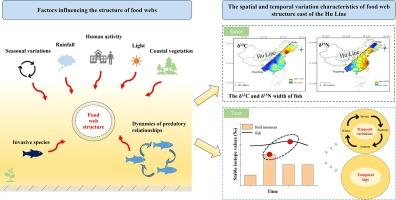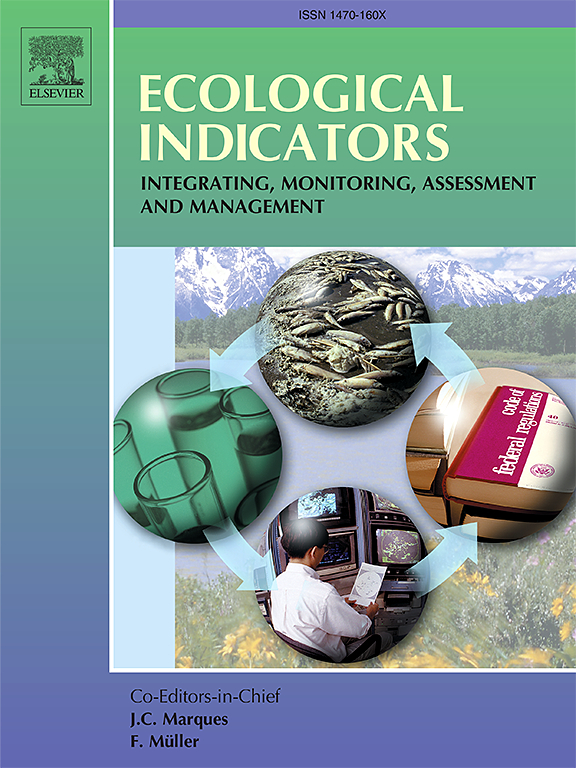稳定同位素在中国沪蓉线以东淡水食物网中的应用所产生的影响
IF 7
2区 环境科学与生态学
Q1 ENVIRONMENTAL SCIENCES
引用次数: 0
摘要
生态系统中物种之间的营养关系以食物网为特征。然而,有关更大空间尺度上食物网特征差异的研究较少。本研究基于稳定同位素技术,讨论了沪宁线以东 13 个淡水生态系统食物网结构的空间差异。结果表明,所研究生态系统的食物网结构存在明显的空间差异,这与人类活动、季节变化、环境因素等有关。此外,本研究还描述了鱼类如何针对食物资源的波动表现出不同的饮食策略,如稳定同位素值的时滞和营养生态位宽度的变化(重叠或分化)。最后,我们总结了稳定同位素技术应用中可能存在的不确定性,强调在利用稳定同位素数据进行生态学研究时必须仔细考虑这些不确定性,以确保研究结果的准确性和可靠性。该研究为淡水生态系统的区域尺度管理提供了理论支持。本文章由计算机程序翻译,如有差异,请以英文原文为准。

Implications from the application of stable isotopes in freshwater food webs east of the Hu Line, China
Trophic relationships between species in ecosystems are characterized by food webs. However, there is less research on the differences in food web characteristics at larger spatial scales. This study discusses the spatial variations in food web structures across 13 freshwater ecosystems located east of the Hu Line, based on stable isotope techniques. The results show that there are significant spatial differences in the structure of the food web of the studied ecosystem, which is associated with human activities, seasonal variation, environmental factors, etc. Additionally, this study describes how fish exhibit different dietary strategies in response to the fluctuations of food resources, such as the temporal lag of stable isotopic values and changes in trophic ecological niche width (overlap or differentiation). Finally, we summarize the potential uncertainties in the application of stable isotope techniques, emphasizing the necessity to carefully consider these uncertainties when utilizing stable isotope data for ecological research to ensure the accuracy and reliability of the results. The study provides theoretical support for the regional-scale management of freshwater ecosystems.
求助全文
通过发布文献求助,成功后即可免费获取论文全文。
去求助
来源期刊

Ecological Indicators
环境科学-环境科学
CiteScore
11.80
自引率
8.70%
发文量
1163
审稿时长
78 days
期刊介绍:
The ultimate aim of Ecological Indicators is to integrate the monitoring and assessment of ecological and environmental indicators with management practices. The journal provides a forum for the discussion of the applied scientific development and review of traditional indicator approaches as well as for theoretical, modelling and quantitative applications such as index development. Research into the following areas will be published.
• All aspects of ecological and environmental indicators and indices.
• New indicators, and new approaches and methods for indicator development, testing and use.
• Development and modelling of indices, e.g. application of indicator suites across multiple scales and resources.
• Analysis and research of resource, system- and scale-specific indicators.
• Methods for integration of social and other valuation metrics for the production of scientifically rigorous and politically-relevant assessments using indicator-based monitoring and assessment programs.
• How research indicators can be transformed into direct application for management purposes.
• Broader assessment objectives and methods, e.g. biodiversity, biological integrity, and sustainability, through the use of indicators.
• Resource-specific indicators such as landscape, agroecosystems, forests, wetlands, etc.
 求助内容:
求助内容: 应助结果提醒方式:
应助结果提醒方式:


